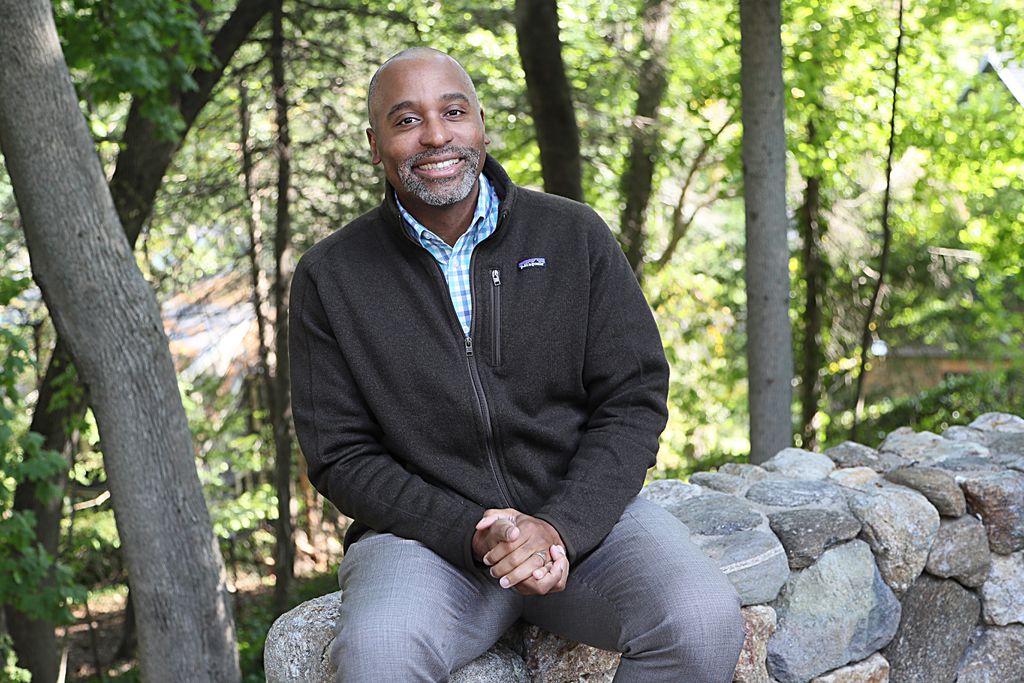
CFA Dean Harvey Young. Photo by SUZANNE KREITER/GLOBE STAFF
This article was originally published in The Boston Globe on September 24, 2020. By Don Aucoin
As Harvey Young was preparing to move from Chicago to Boston a couple of years ago to become dean of Boston University’s College of Fine Arts, several friends sent him links to the Globe’s Spotlight series on racism in the city, published not long before.
A leading theater historian who has done extensive research on “the performance and experience of race,” Young was already aware of Boston’s longstanding reputation as a place not welcoming to people of color.
When he arrived in January 2018, one of the first people Young met was Emerson College president Lee Pelton, who is Black and a pivotal figure in Boston theater, since Emerson College owns three major downtown venues: the Emerson Colonial, the Paramount Center, and the Cutler Majestic. Moreover, Pelton’s support of the presenting organization ArtsEmerson has created much more visibility for international and multicultural works on big local stages.
That same month in 2018, Young attended a production by the small Company One Theatre of Idris Goodwin’s “Hype Man: a break beat play,” a searing examination of racial injustice set in the hip-hop milieu and galvanized by a police shooting of an unarmed Black teenager. Young recalls thinking, as he watched the performance with a diverse Company One audience, that “there’s really something going on here in the city with respect to diversity and inclusion” — an impression that has been fortified since then.
“The Boston theater scene is significantly more dynamic and more complex than I thought it would be when I was living in Chicago,” said Young.
Boston obviously still has a very long way to go. Neither Young nor any other knowledgeable observer believes that area theater companies, much less the city itself, have solved the kind of racial inequities that have long bedeviled Boston. More diversity is needed on the city’s stages, at numerous levels behind the scenes, and, importantly, among the largely white audiences. Systemic racism remains a powerful and pernicious force in theater, as it is elsewhere.
But one measurable and heartening sign of progress in the last few years has been the growth in the ranks of Black theater leadership in the Boston area, with multiple appointments to top decision-making positions at formerly white-led institutions. The impact and insight of these leaders may be especially crucial now, as Boston theaters attempt to respond to the urgent issues brought to the fore by Black Lives Matter and the demands for sweeping reform by national coalitions like We See You, White American Theater and Black Theatre United.
At this fraught historical/cultural moment, the emergence of Black leaders could have positive ramifications in terms of audiences that better reflect the city’s diversity, the opportunities that open up for Black actors and other theater professionals, the plays that Bostonians see and the voices they hear, the message sent to the many college students of color preparing here for careers in theater — and, possibly, for Boston’s overall sense of itself.